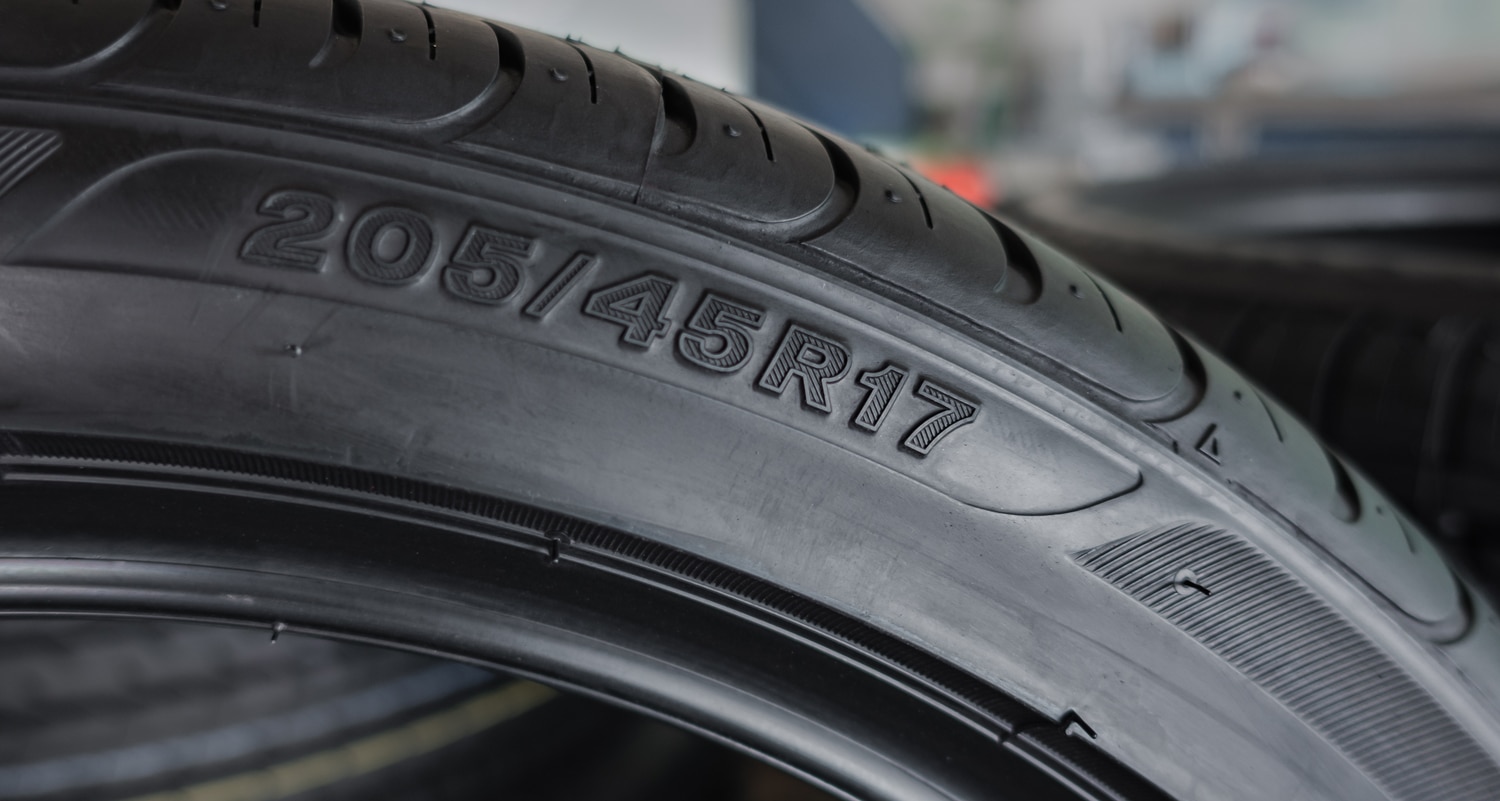How to Read Tire Size and Determine What Fits Your Car
Plus, how going to bigger or smaller rubber can affect your vehicle.
 Shutterstock
Shutterstock
Article QuickTakes:
Wouldn’t it be great if you could ask Siri or Google what size tires are on your car and have the bot ramble off the answer? Unfortunately, we’re not there yet, so if you’re shopping for new rubber, there’s a little legwork you need to do to ensure you get something that fits.
How to Read Tire Size
While you can, of course, read your tire size on the sidewall of the tire itself, know that the original-equipment tire size—the one the car was designed to use—is written on a label on the driver’s door jamb. Checking both locations allows you to quickly confirm whether you still have the same size tires that the car came with from the factory.
Once you’ve found that info, you can decode it. For the purposes of this explanation, we’ll use the following example size: 205/55R16.
The number before the slash, 205 in this case, describes the section width—the width of the tire from the inner sidewall to the outer sidewall. It’s measured in millimeters.
The number after the slash, 55 in our example, is the aspect ratio. This number is a percentage describing the sidewall height (the distance from the tire’s bead to the top of the tread) as a function of the section width. Time for some math: Multiplying the section width (205) by this percentage (0.55) gives us the sidewall height of 112.75 millimeters.
Next to the aspect ratio is a letter representing the tire’s construction. For modern tires, that’s usually an R, meaning radial, or RF, for run-flats. You may also see D, which is an older construction method meaning diagonal or bias-ply.
Finally, there’s the last number, 16 in this case, representing the wheel diameter in inches. To determine the tire’s overall diameter, choose one measurement unit (we’ll use millimeters) and add the wheel diameter (16 inches = 406.4 millimeters) to twice the sidewall height. The equation for our sample tire, then, looks like this: 406.4 millimeters + 2 x 112.75 millimeters. That gives us an overall diameter of 631.9 millimeters.
The easiest and safest option when replacing your tires is to go like for like, sticking with the original section width and overall diameter dimensions. Do this and you can be confident that your new tires will fit with no issues.
Can You Put Bigger Tires on a Car?
First, let’s clarify what we mean by “bigger.” For this discussion, we’ll assume the wheels stay the same, which means tire selection is constrained by the wheel’s diameter and width. So a bigger tire could have a wider section width, a larger overall diameter, or both. A tire can fit a range of wheel widths, usually covering up to two inches, but you’ll need to check for your specific wheels and tires by finding the approved rim width on the tire manufacturer’s website.
Even if the tire fits the wheel, sizing up can cause issues. Wider tires may rub on the car’s fenders or suspension. They may also stick out a bit from the wheel wells and allow the tire to throw road debris onto the sides of the vehicle. A larger diameter tire will alter the accuracy of the car’s speedometer, requiring adjustment by a professional to account for the size difference. Otherwise, the speedometer will read low, and unfortunately that excuse won’t fly in the event you’re pulled over for speeding.
Can You Put Smaller Tires on a Car?
Swapping your tires for narrower or smaller-diameter tires is less problematic than upsizing, but it’s still not a great idea. Clearance shouldn’t be an issue, but speedometer accuracy will, in this case reading higher than the car’s actual speed. There are few if any real advantages to a smaller-diameter tire; reduced sidewall height will create a rougher ride and the car may look a little silly with wheel wells that aren’t filled out. That said, going down a size makes sense when selecting a winter tire, as the smaller section width likely aids in cutting through snow.



